Horror Remakes That Are Better Than The Originals
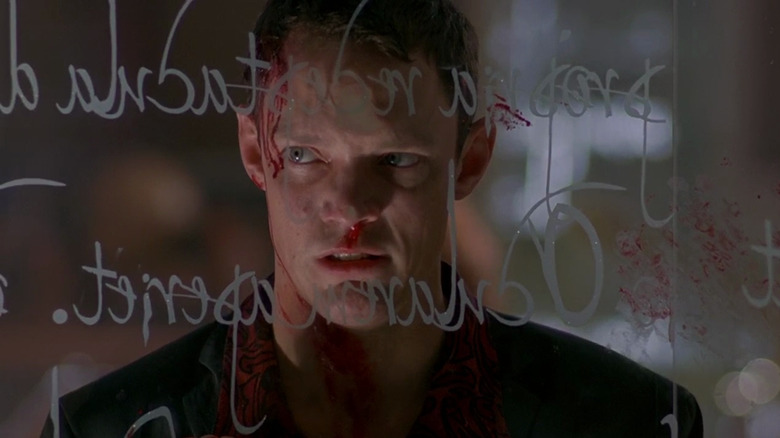
Horror remakes; they're contentious. If done correctly, as with John Carpenter's "The Thing," they become the stuff of legends; Iconic additions to the horror cannon that will truly stand the test of time. If they're not approached properly, however, then you wind up with "The Wicker Man" and a lot of memes but not much else. The bees are great, and all, but a classic they are not!
This collection of titles is all killer, no filler, but it's also rooted in the individual tastes of the team. You may not agree with what made the cut, and you may feel that other titles were short-changed. Maybe you'll love the selection we came up with! The point, however, is that there's no fun in reading the exact same list over and over again. So, the /Film horror team let their freak flags fly and made the case for why these horror remakes are some of the best, arguably better than their original counterparts.
Buckle up and get ready, this one's a little spicy!
Bram Stoker's Dracula (1992)
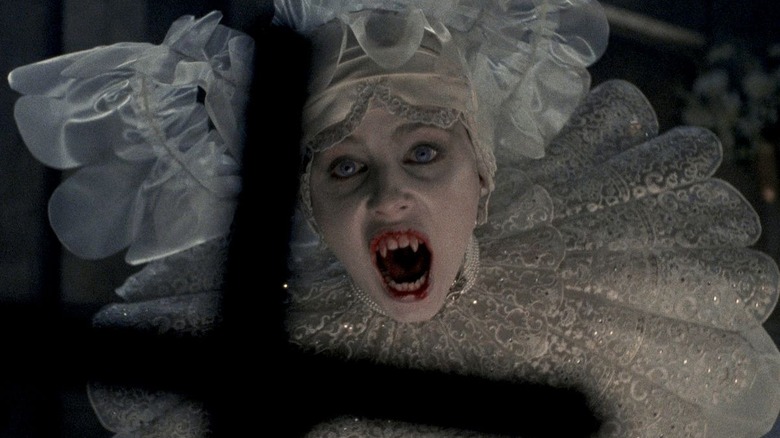
A lot of different people have tried to bring the tale of Dracula to the silver screen since Bram Stoker's seminal novel was published in 1897, but perhaps the best of them all is "Bram Stoker's Dracula," released in 1992. There are plenty of gems among the Universal "Dracula" films where he was played by Bela Legosi, and Christopher Lee's Hammer "Dracula" films are also pretty fantastic, but Francis Ford Coppola's adaptation of the material is a masterpiece.
Stoker's novel is a gothic romance, mixing lust, tragedy, and horror to great effect. Coppola's film breathes life into the text, making many of its most memorable moments into something even more stunning. Gary Oldman plays the title character, who appears as both a ravishing warrior king with a killer sense of fashion and a bizarre old man with buns atop his head and a fetish for frills. He discovers the reincarnation of his lost love in the young Mina Harker (played by Winona Ryder), though her husband Jonathan (played by a slightly miscast Keanu Reeves) will stop at nothing to try and save her from his supernatural clutches.
"Bram Stoker's Dracula" has it all: awe-inspiring tableaus, costume design by the inimitable Eiko Ishioka, and Oldman's Dracula facing off against Anthony Hopkins as the vampire hunter Van Helsing. The film features a visual flair that's hard to top, with some truly inventive ways of stretching the budget to make everything feel even more grandiose and extravagant. From the opening tableau that tells the audience Dracula's origin story through the use of shadow puppets to Jonathan Harker's torment at the hands of Dracula's vampiric brides, "Bram Stoker's Dracula" is a sensuous visual feast that simply can't be topped. (Danielle Ryan)
Little Shop Of Horrors (1986)
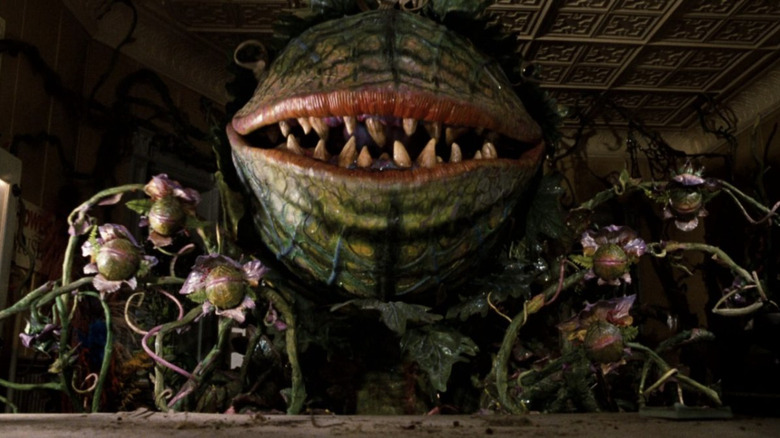
Unless you've been duped by the misleading box cover art that pretends Jack Nicholson is the star of 1960's "Little Shop of Horrors," chances are you don't even realize the musical starring Rick Moranis, Ellen Greene, Vincent Gardenia, Steve Martin, and Levi Stubbs featuring a singing "mean green mother from outer space" is a remake. No shade to the Roger Corman-produced original, but bringing a low-budget B-movie to a fight against a remake featuring music from Disney renaissance legends Alan Menken and Howard Ashman and directed by Miss Piggy and Yoda himself, Frank Oz, is asking for a butt-kickin'.
Everything about "Little Shop of Horrors" is an absolute marvel, from the stunning theatrical-inspired sets of Skid Row to the perfectly performed songs. However, it's the masterful puppeteering work of Audrey II that keeps the film truly untouchable. Thanks to Oz's background working with the Jim Henson Company, he was able to wrangle some of the best puppeteers in the business, and Lyle Conway of "The Muppets Show," "Dark Crystal," and "The Great Muppet Caper" delivered puppet impeccability with Audrey II.
Oz's film is a love letter to the B-movie roots of the original film that elevates absolutely every fantastical element to perfection. Moranis and Greene are superb leading players, and it's impossible to hear "Suddenly Seymour" without wanting to belt-sing to your heart's content. There are few movies that could be classified as "perfect films," but 1986's "Little Shop of Horrors" is absolutely one of them. (BJ Colangelo)
The Crazies (2010)
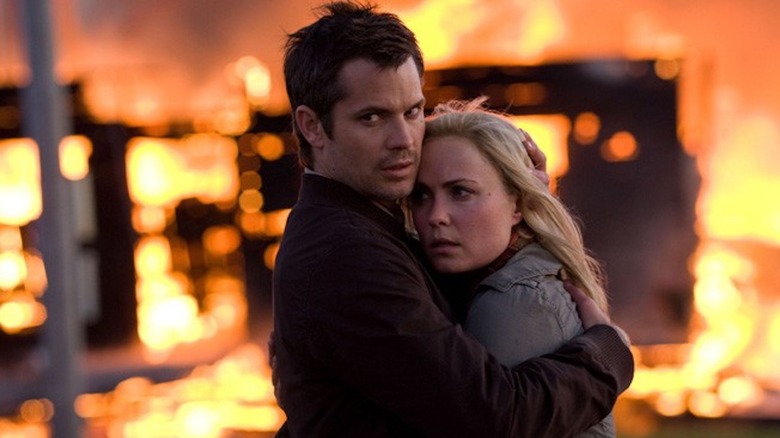
George A. Romero's 1973 horror flick about a town plunged into chaos when a military bio-weapon is accidentally unleashed on its populace isn't a zombie film per se. Instead of dying, his characters are transformed into deranged, ungovernable nut-jobs. The military attempts to restore order, but they only exacerbate the situation. Romero's notion of regular, seemingly reasonable Americans becoming suddenly unhinged has loads of potential, but budgetary constraints, slack pacing, and poor performances undermine his film at every turn.
Breck Eisner's 2010 remake, however, is superior in every regard. The film hooks viewers with its all-too-believable opening scene, where the town drunk wanders onto a baseball field with a shotgun, and it gets creepier from there. Timothy Olyphant is hugely sympathetic as David, a small-town sheriff who escapes a military-imposed quarantine to rescue his pregnant wife, Judy (Radha Mitchell). When the infected townspeople overwhelm their captors, our presumably immune heroes scramble to evade the growing number of crazies and the remaining soldiers (who've been ordered to execute all civilians).
Though Eisner had proven himself to be a perfectly competent director with the dopey Matthew McConaughey adventure "Sahara," he was no one's first choice to attempt an upgrade on Romero's fascinatingly flawed original. Turns out the child of former Disney CEO Michael Eisner is a more than proficient horror filmmaker. His spare, widescreen compositions conjure a slow-mounting sense of dread that's more Carpenter than Romero, while his set pieces, particularly the nursery sequence, are terrifyingly taut. Sadly, Eisner belly-flopped with his follow-up, "The Last Witch Hunter," and hasn't made a film, horror or otherwise, since. (Jeremy Smith)
It (2017)
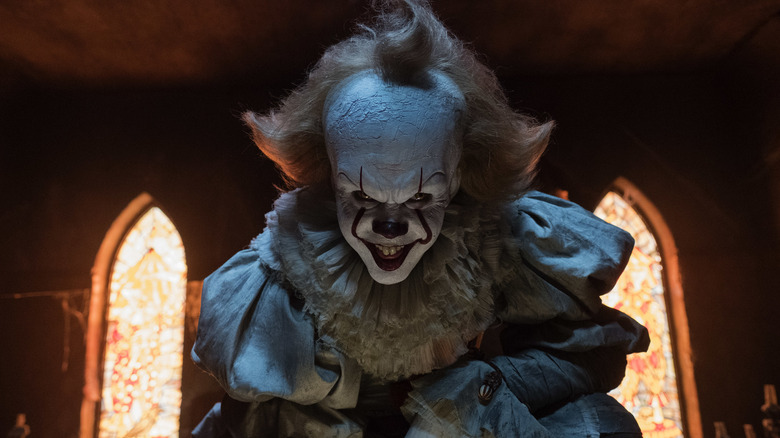
Stephen King has been one of the unquestioned kings of horror storytelling for decades, but even so, many adaptations of his stories have failed to live up to the source material at hand. With the original "It" miniseries, we got a great performance from Tim Curry as Pennywise, but ultimately, a compromised version of the sprawling horror epic that King crafted in 1986. Fortunately, Warner Bros. finally gave Pennywise his time to truly shine in 2017 when director Andy Muschietti's "It" arrived in theaters, shattering expectations and box office records along the way.
Muschietti managed to do so much right in adapting the almost unruly, hefty source material that King gifted us. Primarily, Muschietti opted to divide the story into two parts, with this first film focusing on The Losers Club as kids in Derry, Maine, in the '80s. That not only gave the film focus but also offered it a certain charm not unlike "Stranger Things" which was able to tap into childhood nostalgia for the decade.
Muschietti also did the terrors of "It" justice, aided greatly by a stellar performance from Bill Skarsgård as Pennywise the Clown. From that very first scene where Georgie is brutally pulled into the storm drain, the audience knows this is going to be one heck of a ride. The only real shame of it all is that 2019's "It Chapter Two" was always going to have a near-impossible time matching the first part's perfect balance of fun and scares. Even so, that takes nothing away from what this film was able to accomplish, ranking as not just a better remake, but one of the greatest Stephen King adaptations ever made. (Ryan Scott)
The Thing (1982)
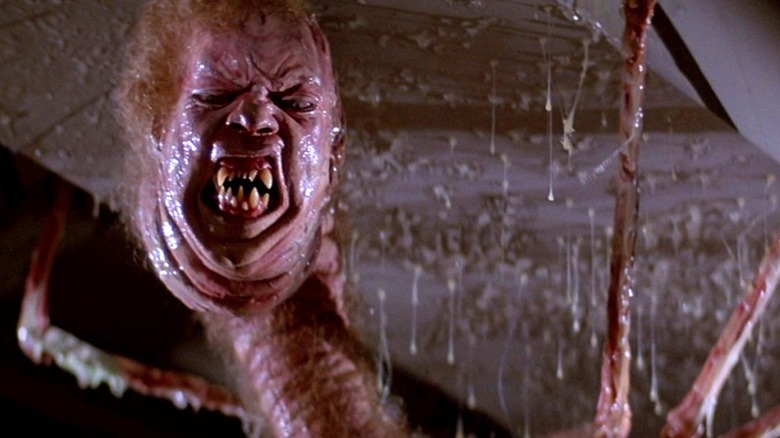
John Carpenter's "The Thing" is technically a remake of the 1951 sci-fi film "The Thing From Another World," but it has some major narrative differences that place it a step above its predecessor. Both films are based on the story "Who Goes There?" by John Wood Campbell Jr, but Carpenter's version is a more successful adaptation in terms of remaining true to the source material. For one thing — no pun intended — Carpenter's "The Thing" includes the alien creature's ability to shapeshift, while the 1951 version does not. The Thing's ability to assume the shape of other lifeforms is a major source of tension in Carpenter's film, fueling the distrust and paranoia the crewmembers have for one another and creating a heightened air of suspense for viewers that isn't quite achieved in the original. Both films utilize the human fear and fascination with an unknown "other," but the 1951 adaptation has most of the characters more or less united against the titular Thing, while the presence of the Thing turns the men against each other in the 1982 version.
While it's probably an unfair or nitpicky criticism, another factor that makes "The Thing" better than "The Thing from Another World" is that none of the actors use that insufferable Mid-Atlantic accent that was so popular in older movies. Additionally, "The Thing" is overall just scarier than its black-and-white ancestor. "The Thing from Another World" has some unintentionally hilarious moments that were probably more terrifying when it was made, but don't exactly hold up all these years later. For instance, the creature in the original film is just a guy in a goofy costume, and watching him get electrocuted is more amusing than gruesome. Meanwhile, the creature in "The Thing" still looks absolutely disgusting and horrifying 30 years after the film's debut. (Deshawn Thomas)
Friday The 13th (2009)
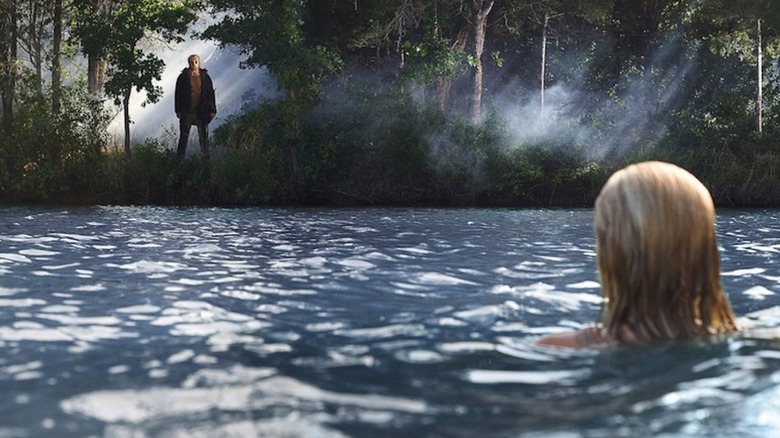
Sean S. Cunningham might be a savvy producer, but he's an absolute clod when calling the shots behind the camera, and "Friday the 13th" is easily one of his worst directing efforts. The dialogue and characterizations are listless, the script repeatedly telegraphs its major plot twist, and the overall look of the film is shockingly amateurish. The true star of the 1980 original is makeup effects legend Tom Savini, whose inventively bloody kills were the main reason the film was able to separate itself from its other "Halloween" knockoff competition. Most of the sequels are far superior, with "Friday the 13th: The Final Chapter," which served as Savini's send-off to the series and character he essentially created, towering above them all.
That the Michael Bay-produced 2009 remake outclassed its predecessor in terms of filmmaking craft was hardly surprising. If anything, it's a little too sleek for a slasher flick. Fortunately, the screenplay was written with tremendous affection by franchise fans Damian Shannon and Mark Swift (bolstered by an invaluable story assist from Mark Wheaton). They toy with the iconography in surprisingly cheeky ways while turning Jason Voorhees into a more hulking, brute-force predator than he was in the previous movies. In fact, this is really the only time outside of "The Final Chapter" that Jason has been truly scary, which is no mean feat given that the character had been overtly parodied in his own movies (most notably "Friday the 13th Part VIII: Jason Goes to Vancouver, er, Manhattan, yes, that's totally Manhattan and not Vancouver").
The remake was a box-office success, but failed to spawn a single sequel. Maybe it was just too good! (Jeremy Smith)
The Fly (1986)
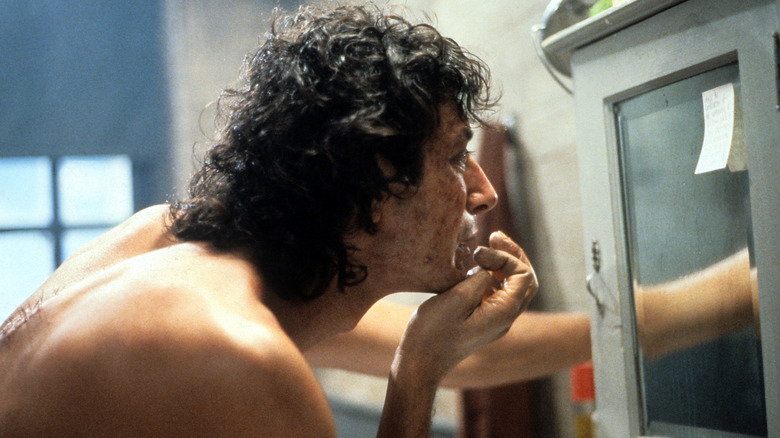
David Cronenberg is responsible for more than his fair share of genre classics including "Scanners" and "Videodrome," but the filmmaker arguably gave us his crowning achievement in 1986 with his remake of "The Fly." It's entirely possible that, without this remake, the original 1958 film from director Kurt Neumann might have run the risk of being buried by the sands of time. But Cronenberg took the concept to another level and pulled precisely no punches, leaning into the horrific nature of the premise and giving us some of the greatest body horror and creature effects of all time. This serves to make his version at once unrelentingly engaging, yet difficult to watch.
Jeff Goldblum anchors the film as scientist Seth Brundle who is looking to make a teleportation device, and even though his creation seemingly works, the unexpected inclusion of a fly during his first successful human test turns his dream into a nightmare. What follows is a gripping, heartbreaking, and disgusting tale of man becoming the beast as Brundle is slowly taken over by the fly's DNA, turning into a gigantic, hideous man-beast.
Goldblum's performance certainly goes a long way to help elevate this film, but Geena Davis, who plays Brundle's girlfriend Veronica, also deserves a tremendous deal of credit as she has to follow him down this horrifying rabbit hole. A compelling tale of a man obsessed boasting not one but two stellar performances and some impressively disturbing visuals make this version of "The Fly" leaps and bounds better than its predecessor. (Ryan Scott)
Thirteen Ghosts (2001)
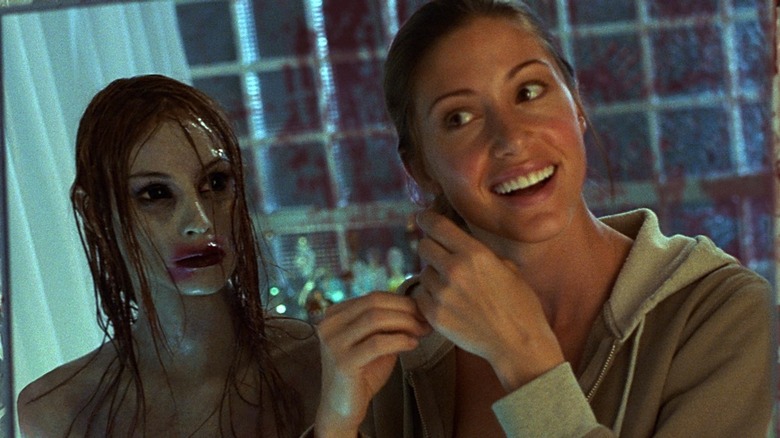
William Castle is a master of horror due in large part because to the way he often incorporated interactive gimmicks to make his films resonate more deeply with audiences. In his 1960 film "13 Ghosts," he invented "Illusion-O," a way for audiences to see moments with ghosts in 3D using cellophane filter glasses, but required audiences to look through either the red or blue lenses at the same time. The red filter intensified the ghosts, and the blue filter let the audience watch without the scare. It was a clever gimmick, and the only real reason to revisit "13 Ghosts" today, because, as a whole, the film isn't particularly scary, well-acted, or well-crafted. This is precisely why Steve Beck's 2001 remake "Thir13en Ghosts" is a far superior film.
Writers Neal Marshall Stevens and Richard D'Ovidio managed to take the original source material and twist it into one of the most enjoyable rides one can have while watching a horror film. Drawing on the gimmicky energy of a William Castle flick, the ghosts in the remake are visible only when the characters wear special glasses, but the addition of the Black Zodiac provided thirteen of the scariest and most inventive ghost designs in horror history. The stakes feel real for all of the characters, simply because the ghosts look so believably menacing.
"Thir13en Ghosts" was greatly misunderstood at the time of release and panned by critics, but has since garnered a cult following of die-hard fans who see the film for exactly what it is — a scary good time in a haunted house. William Castle would be proud. (BJ Colangelo)
Nightmare Alley (2021)
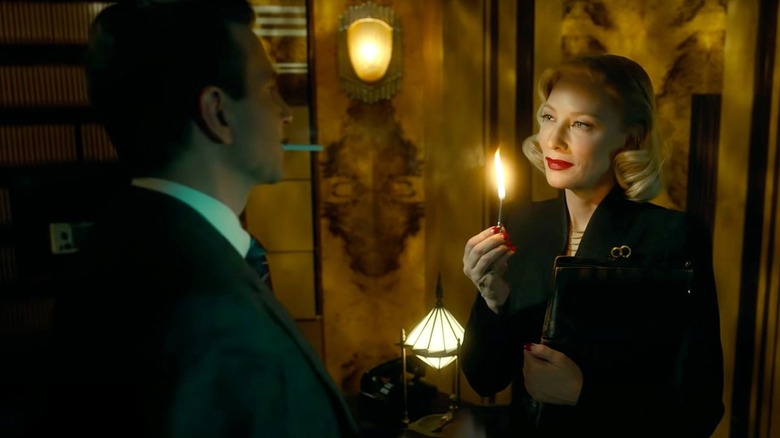
The original 1947 film adaptation of the novel "Nightmare Alley" is like an impressive semi-functional prototype, but Guillermo del Toro's 2021 remake of the same name is the fully realized device with all the bells and whistles. Neither film is bad, but the 2021 rendition is much more faithful to the source material and greatly benefits from the strides in special effects and cinematic boundary-pushing that have transpired since the 1947 original. For one thing, movies just look better in color, and there's something about horror in full color that feels so much more real and menacing. That said, del Toro's "Nightmare Alley" still manages to capture the visual spirit of film noir with muted tones that create a sleek, foreboding ambiance.
In addition to being more visually compelling, del Toro's "Nightmare Alley" doesn't subtly hint at the gruesome and grotesque in the way the original was forced to due to the puritanical restrictions and excessive censorship imposed upon filmmakers by the Hays Code. Subtlety has its place, but full-throttle indulgence in the macabre just works better when done right, and it was definitely done right in the remake. This version also functions more effectively as a cautionary tale about greed and deception than the original film, which omits several more controversial plot details from the novel, like the tragically botched abortion that haunts Ezra Grindle (Richard Jenkins), or the fact that Stan's (Bradley Cooper) willingness to forgo all decency and perform "spook shows" against his mentor's warnings leads to the murder-suicide of a grieving couple. The remake also allows Molly (Rooney Mara) to escape a fully corrupt Stan, whereas the original has her reappear in his life at his lowest point, severely undermining Stan's descent to the most inferior rung on the freak show ladder. Sometimes unhappy endings are better. (Deshawn Thomas)
Invasion Of The Body Snatchers (1978)
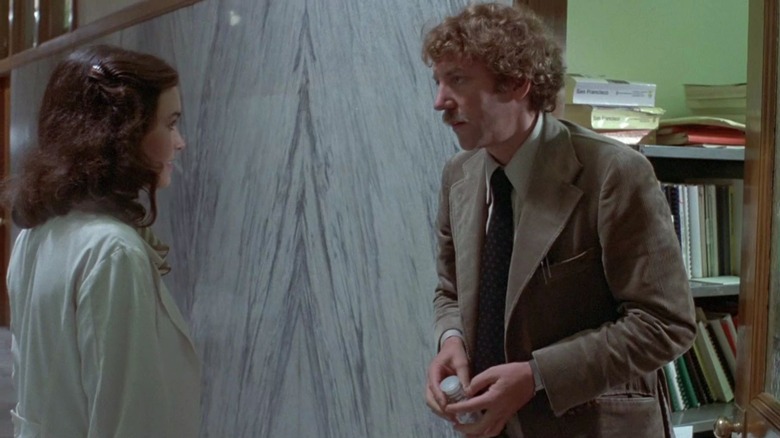
"Invasion of the Body Snatchers" has been remade several times, dating back to Don Siegel's original 1956 horror classic. With all due respect to Siegel's film, director Philip Kaufman perfected this tale with his 1978 adaptation. The film boasts a similar premise with an alien invasion happening in a California town unbeknownst to its residents. The extraterrestrials are capable of making exact copies of humans, leading to some people acting strange. The combination of grit and realism married to the late '70s setting truly serves to elevate the concept that had been brought to life more than 20 years prior, with a leading turn by Donald Sutherland that helps put the whole thing over the top. Sutherland, amazingly enough, has never been nominated for an Oscar during the course of his illustrious career, and if any single performance is likely to raise an eyebrow in surprise over that fact, this is probably it.
Creepy, mysterious, and timeless, this version of "Invasion of the Body Snatchers" has truly stood the test of time. It also wasn't afraid to push the envelope, as evidenced by the legendarily horrifying human/dog hybrid scene. It is likely because this movie did it so well on just about every level that later remakes, such as 2007's "The Invasion," have had such a hard time finding the same level of success. While the original is still worth a look and is owed a lot for introducing the premise, Kaufman cranked it out of the park with his reinterpretation, cementing it as the definitive version that stands a cut above the rest more than 40 years later. (Ryan Scott)
The Ring (2002)
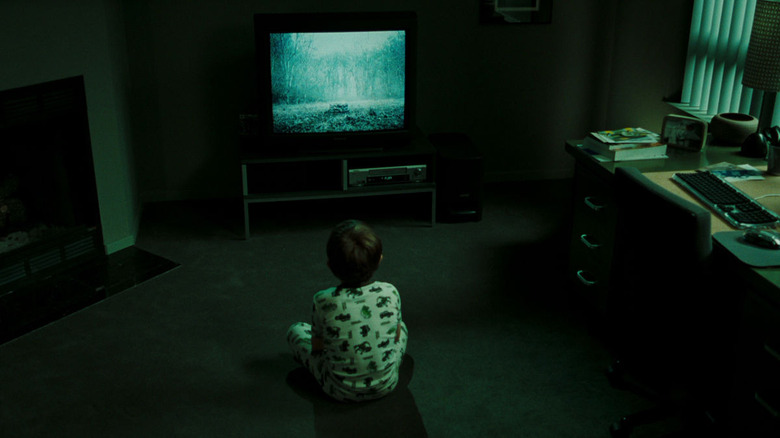
Most American remakes of Southeast Asian horror just aren't very good, but Gore Verbinski's "The Ring" is one of the very few that takes its source material and expands upon it. "The Ring" is extremely similar to its original version, the 1998 Hideo Nakata film "Ringu," but Verbinski added his own unique visual flair, some seriously scary gore, and brought along a big Hollywood budget to make his version shine.
One thing that makes praising Verbinski's accomplishment a little trickier is that the original film is also really, really good. "The Ring" could have been a shot-for-shot remake of "Ringu" and still been somewhat brilliant because it's just that much of a killer concept and execution. Instead, Verbinski traded Tokyo for Seattle and made his remake distinctly American while still maintaining the universal themes of the original. Naomi Watts anchors the film as journalist Rachel Keller, who begins investigating the mysterious death of her teenage niece following a trip to a remote cabin. There, she discovers the now-infamous cursed videotape that dooms its watchers to a horrific death within seven days of viewing.
"The Ring" is a glossy Hollywood version of its predecessor, but with a story this fantastical and complex, that gloss and budget really helps. Watt's performance is also a career-best, portraying a woman balancing motherhood, her job, and her own desires. "Ringu" is a bit more subtle and subdued, but making things bloodier and shinier is the American way, and for once, it worked. The only downside to the success of "The Ring" is that a slew of American remakes came in its wake, like "The Grudge," "The Eye," and "Shutter," though none of them would ever come close to the success of "The Ring." (Danielle Ryan)
The Blob (1988)
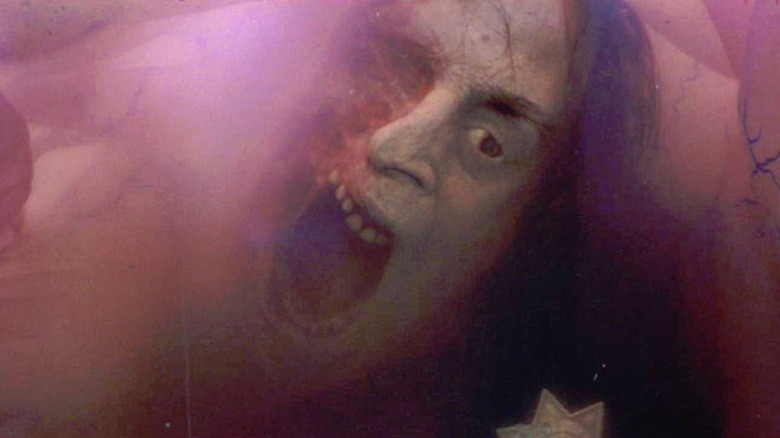
The gelatinous menace of Irvin Yeaworth's 1958 B-movie favorite is a lot creepier in theory than in execution. When it's first extracted from a meteorite by a curious old man, the creature only poses a threat to those dumb enough to handle it with their own flesh or unfortunate enough to find themselves cornered by it in a windowless room. The gliding-and-sliding extraterrestrial becomes a tad more concerning as it gets larger via each person it consumes, but it's just too darn slow to throw a scare into the viewer. Chuck Russell and Frank Darabont remedied this and then some with their spiffy 1988 remake. Their Blob is a fleet pink amoeba capable of firing off slimy tentacles that yank victims into its corrosive core.
Their Blob means business.
Their Blob is also a biological weapon created by the U.S. military, which they launched into space when it proved lethal to all of humanity. Unfortunately, what went up has come back down, and now it's feasting on the colorful inhabitants of idyllic Arborville, California. Russell and Darabont work in clever variations on the original's small-town stereotypes, though the casting of A-plus character actors like Jeffrey DeMunn, Candy Clark, Del Close, and Art LaFleur is every bit as integral to nailing the film's cheerfully irreverent spirit. Russell's direction is unfussy and efficient; he zips through the pseudo-scientific exposition and keeps the viewer on their toes by killing off some of the film's most likable characters early on.
Strangely, Tony Gardner's monster is less memorable than its kills. Then again, there's only so much one can do with a murderous mass of jelly. Best to showcase just how truly nasty it is to get caught in its skin-and-bone dissolving clutches. The denouement leaves open the potential for a sequel, but sadly, "The Blob" was an unmitigated commercial disaster for Tri-Star. (Jeremy Smith)
The Invisible Man (2020)
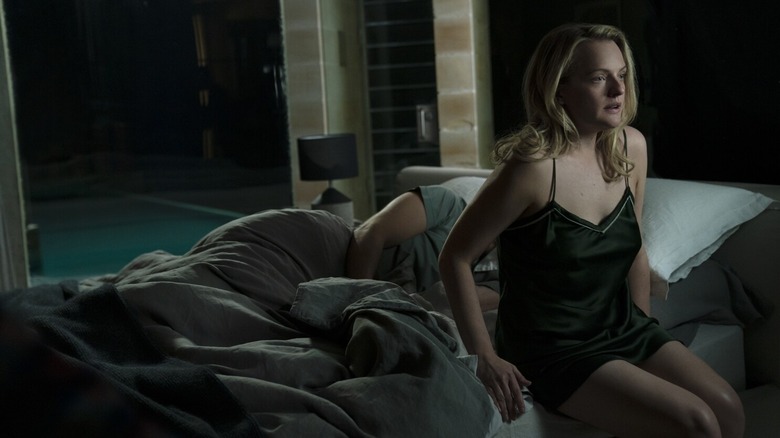
The 2020 remake of "The Invisible Man" is dissimilar to the 1933 original in every way aside from the fact that there's an invisible man, and he's a horrible person. The original is the classic tale of a scientist who gets more than he bargained for and is driven mad as a result, while the remake is a harrowing psychological thriller featuring a woman's efforts to escape an abusive scumbag. Although the original is good, the remake is better in that it's more relatable and compelling. Each movie requires a generous suspension of disbelief, but there's something a bit more believable about the 2020 version. Perhaps it's the fact that the horror is not merely derived from the concept of an invisible madman, but also from the intense emotional and psychological torment he inflicts upon Cecilia (Elisabeth Moss) throughout the film?
It's eerily realistic the way everyone doubts Cecilia's claims and sanity, leaving her all alone to deal with an unseen, seemingly omnipresent threat. The abuse, harassment, and accusations of crimes and misdeeds you didn't commit, with no one around to believe you, is pretty terrifying in its own right, so the invisibility aspect functions as an extra shot of espresso in the latte of terror. The 2020 remake ends with revenge, while the original does not contain any sort of meaningful or satisfying catharsis. Finally, the remake is more engaging because the viewers are pulled into a sort of intimacy with the film's heroine as the audience is the only other party privy to Adrien's sadistic games for the majority of the film, allowing them to share in Cecilia's frustration, helplessness, and rage. (Deshawn Thomas)
Willard (2003)
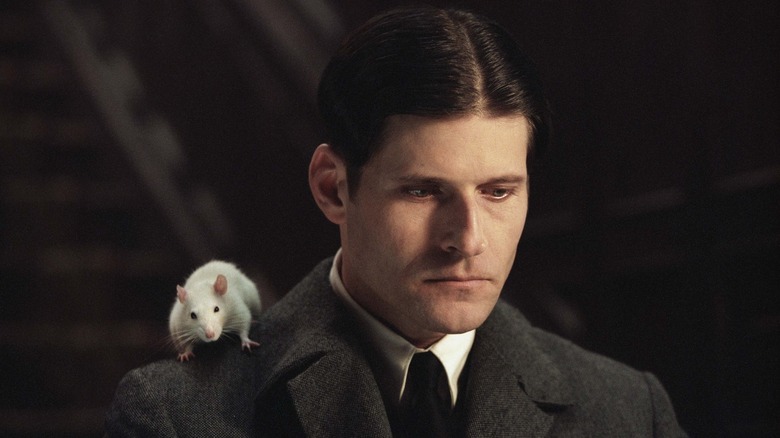
Musophobia, the fear of rats and mice, is pretty common in humans. Throughout time, the furry little rodents have unfortunately been spreaders of plague and destroyers of crops, and many people instinctively find them terrifying. That's not the case for the title character in both film adaptations of "Willard," about a lonely and brow-beaten man who finds himself with the ability to command the critters to do his bidding after befriending two rats that he names Socrates and Ben. The original 1971 film was a success and spawned a sequel, "Ben," in 1972, complete with a Michael Jackson song on the soundtrack.
Director Glen Morgan's 2003 remake of "Willard" went all the way back to the source material, Stephen Gilbert's 1968 short novel "Ratman's Notebooks," and he cast the coolest creepy character actor, Crispin Glover, in the title role. Glover is absolutely perfect as Willard, balancing a lonely kind of sadness and real menace within a surprisingly nuanced character. Willard is one part Norman Bates and one part the Joker, his fury and mommy issues combined into something that's ultimately deadly.
The original "Willard" starring Bruce Davison is pretty good, but Glover walks the tightrope between terrifying and pathetic in a way that makes the remake ultimately more compelling. It's a creative visual feast with some great performances from both the animal actors and the human ones, including the legendary R. Lee Ermey as Willard's cruel work supervisor who eventually kills Socrates and sends Willard on a bloody path of revenge. The film's true villain isn't even Willard, but the massive rat Ben, and it's honestly a shame that he never got a sequel remake, because that rat rules. (Danielle Ryan)
House Of Wax (2005)
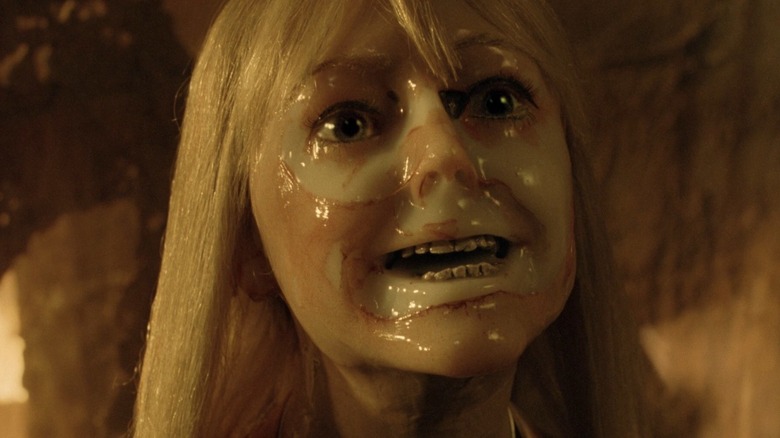
The 2005 slasher "House of Wax" has barely any similarities to André De Toth's 1953 original starring Vincent Price, and this is absolutely to the benefit of Jaume Collet-Serra's updated interpretation. The film was written by Chad and Carey W. Hayes, the twin brothers who would go on to write "The Conjuring." André De Toth's original is itself a remake of 1933's "Mystery of the Wax Museum," but a landmark film in horror history as the very first color 3D feature film from a major American studio. The similarities exist in the setting of a wax museum, and the horrific reveal that the wax figures in the museum are actually the wax-coated corpses of real people. All things being fair, the 2005 "House of Wax" actually bears more similarities with the 1979 movie "Tourist Trap" than it does the film it's intending to remake.
What makes "House of Wax" such a fantastic remake is that Jaume Collet-Serra leaned into the tropes of the 2000s slasher boom, and wasn't afraid to revel in the ones that would define the era. The film was famous for its marketing campaign of "See Paris Die," a reference to the promised death of a character named Paige Edwards played by Paris Hilton, solidifying itself as one of the strongest time capsule films to capture the decade. "House of Wax" is a lean, mean, face-ripping machine, and a grotesquely stunning presentation of how digital effects can be used to enhance the terror of practical creations.
The original "House of Wax" was known for its stand-out performance from Vincent Price, and without his presence, the film is just ... fine. "House of Wax" 2005, however, is a disgusting feast where the house always wins. (BJ Colangelo)
Read this next: The 31 Scariest Movie Scenes Ever
The post Horror Remakes That Are Better Than The Originals appeared first on /Film.
